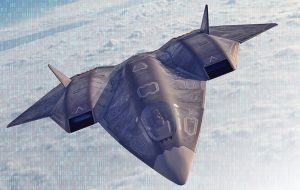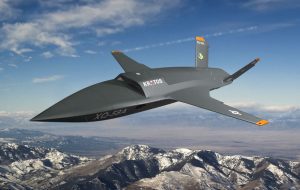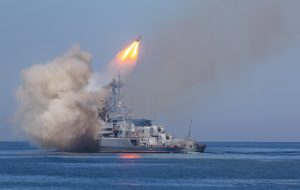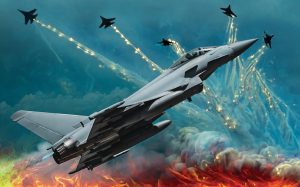Theory of missile defense systems is based on building ground, surface and even space missile bases and platforms, equipped with highly advanced technology in multiple layers. The missile platforms are 24/7 standby to intercept and destroy any missile that may be launched by any potential hostile forces.
The main missile threats that missile defense systems have aimed to defend against have been ballistic missiles, but more recently, greater emphasis has been placed on defending against other types of missiles as well.
The effectiveness of a defensive missile system is measured by its ability to destroy any missile threat in its early stage of its launch or at least before it reaches its targets. This article deals with types of missiles in brief and expansively reviews concepts and stages of operating missile interceptor systems, since the Cold War, and recent developments and techniques of systems that joined service all over the world, in addition to future projects to strengthen and boost missile interception effort.
I. Types of Missiles
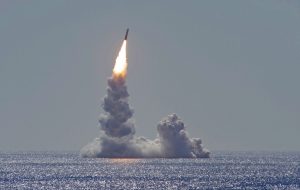
A. Ballistic missiles
There are three stages of flight for a ballistic missile:
1. Boost Phase:
The boost phase begins at launch and lasts until rocket engines stop firing and pushing the missile away from Earth, Depending on the missile, it lasts between three and five minutes.
Generally, the missile is traveling relatively slowly, although towards the end of this stage, an ICBM can reach speeds of more than 24,000 km/hour. Most of this phase takes place in the atmosphere (endoatmospheric).
2.Midcourse Phase:
The midcourse phase begins after the rockets finish firing and when the missile is on a ballistic course toward its target. This is the longest stage of a missile’s flight, lasting up to 20 minutes for ICBMs.
During the early part of the midcourse stage, the missile is still ascending toward its apogee, while during the latter part, it is descending toward Earth.
During this stage, the missile’s warhead(s), as well as any decoys, separate from the delivery platform, or “bus.” This phase takes place in space (exoatmospheric). The warhead is now called/is on a reentry vehicle (RV).
3. Terminal Phase:
The terminal phase begins when the missile’s warhead, or RV, reenters the Earth’s atmosphere (endoatmospheric), and it continues until impact or detonation.
This stage takes less than a minute for a strategic warhead, which can be traveling at speeds greater than 3,200 kilometers per hour.
B. Cruise Missiles
Cruise missiles remain within the atmosphere throughout the duration of their flight. Cruise missiles are propelled by jet engines and can be launched from land-, air-, or sea-based platforms. Due to their constant propellants, they are more maneuverable than ballistic missiles, though they are relatively slower than their ballistic counterparts.
C. Hypersonic Missiles
There are two types of hypersonic missiles, which are currently under development. A hypersonic boost-glide vehicle (HGV) is fired by rockets into space and then released to fly to its target along the upper atmosphere.
Unlike ballistic missiles, a boost-glide vehicle flies at a lower altitude and can change its intended target and trajectory repeatedly during its flight. The second type, a hypersonic cruise missile, is powered through its entire flight by advanced rockets or high-speed jet engines. It is a faster version of existing cruise missiles.
II. Intercept Systems
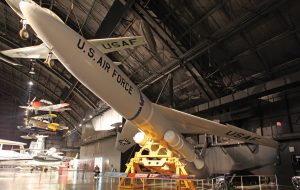
A. Background:
According to Encyclopaedia Britannica, an anti-ballistic missile (ABM) is a weapon designed to intercept and destroy ballistic missiles. Effective ABM systems have been sought since the Cold War, when the nuclear arms race raised the specter of complete destruction by unstoppable ballistic missiles.
In the late 1960s both the U.S. and the Soviet Union developed nuclear-armed ABM systems that combined a high-altitude interceptor missile (the U.S. Spartan and Soviet Galosh) with a terminal-phase interceptor (the U.S. Sprint and Soviet Gazelle).
Both sides were limited by the 1972 Treaty on Anti-ballistic Missile Systems to one ABM location each.
The U.S. eventually dismantled its system, while the Soviet Union deployed one around Moscow. During the 1980s the U.S. began research on an ambitious Strategic Defense Initiative against an all-out Soviet attack, but this effort proved expensive and technically difficult, and it lost urgency with the collapse of the Soviet Union.
Attention shifted to “theatre” systems such as the U.S. Patriot missile, which was deployed with limited effect against conventionally armed Iraqi Scud missiles during the Gulf War (1990–91).
In 2002 the U.S. formally withdrew from the ABM treaty in order to develop a defense system against limited missile attacks by smaller powers or “rogue” states.
B. Components:
A missile defense system consists of:
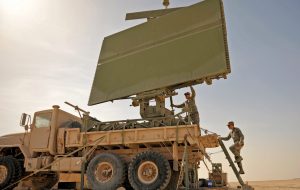
1 Satellite, Ground- or Sea-based Radars and Sensors: Satellites and ground- or sea-based radars create a monitoring system that contributes to offensive missile detection (detecting a missile after it has been launched), discrimination (what is a threat versus a decoy or other countermeasures), and tracking (keeping the missile “in sight” so that an interceptor can locate it and eliminate the threat).
2 Data Processing: All data collected by satellites, sensors and radars is to be directly routed through command and control headquarter or center for processing.
3 Command and Control: Processed data is then sent to the interceptors and kill vehicles that are linked through another network of command and control centers, which are located around the entire world. Command and control centers also tend to utilize artificial intelligence programs to facilitate taking the proper action.
4 Interceptors: Interceptors are the missiles used once a threat has been detected. Missiles carry “kill vehicles,” which detach from the missile (also called the boosters or rockets) and then go to try to eliminate the threat. Today’s kill vehicles are “hit-to-kill,” meaning that they aim to eliminate the threat by actually running into it, or “kinetically” (also called a “kinetic kill”).
Due to the speed at which the incoming rival missile and interceptors and kill vehicles are traveling, this has metaphorically been compared to “a bullet hitting another bullet.”
Some interceptors are single pieces (which means that they do not separate from their kill vehicles), such as the Patriot Advanced Capability-3 (PAC-3).
5 Launchers: Interceptors require launchers. Some interceptors are launched from in-ground silos, road-mobile trucks, or ships. There currently exist no interceptors in space, though the idea has been proposed.
These launchers and interceptors can be carried in a “battery,” which can carry up to a cluster of launchers, interceptors with their kill vehicles, radars, and fire control.
C. Concepts and Developments
In recent years, several ballistic missile intercept concepts have been proposed as part of the overall ballistic missile defense (BMD) program. One such program was the midcourse concept.
1 Laser Technologies: The missile defense technologies pursued presently include the airborne laser (ABL), the space-based laser (SBL), the sea-based kinetic-energy kill concept, and the space-based hit-to-kill experiment. The latter two are being considered to serve as hedges in case the directed-energy (DE) approaches fail.
2 Direct Energy Approaches: Nevertheless, DE is considered to be the “new frontier,” in that it provides military planners a new capability in warfare: to be able to fight at the speed of light.
Previously, attention of US military has been directed to airborne chemical lasers to destroy ballistic missiles. The Navy’s DD-X ship design will use DE weapons that can destroy supersonic anti-ship missiles.
However, for the near term, interest is turning to smaller, cheaper solid-state HEL and HPM weapons. A solid-state laser generates pulsed power that creates an energy build up that damages targets made of relatively soft, easy-to-melt metals such as aluminium and other lightweight materials used in missiles. UCAVs equipped with DE weapons are also envisioned to strike air defense missiles and radar sites. Currently, the Pentagon is putting new emphasis on the boost-phase intercept (BPI) technology.
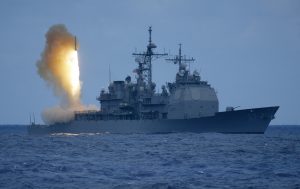
3 Boost-Phase Intercept (BPI): The interception of ICBMs using the BPI technology is considered by many experts in the field as the most promising and effective way to counter enemy ballistic missile threats.
For instance, in the case of ICBMs, the defense has about 180-300 sec during which the target is boosting and presents a large IR signature to track, which means that an IR launch warning sensor will be needed to alert against an ICBM launch.
An obvious benefit of having a boost-phase element in a larger missile defense architecture, some experts believe, is that it makes it more difficult for an enemy to devise countermeasures.
One of the greatest advantages of boost-phase systems is that they can destroy a missile regardless of its design range. Consequently, if the missile carries a nuclear, chemical, or biological warhead, in most cases, it would fall on the enemy’s own territory. The greatest difficulty in using the BPI technology is that everything from launch to detection to intercept must be completed within a few minutes (e.g., a maximum of 5 min).
4 Non-Boost-Phase Systems: The formidable difficulties of being able to maintain boost-phase interceptors in the locations necessary to enable defense against long-range attacks mean that any operationally feasible defense against such attacks will have to effect intercept after the boost phase is complete, according to an article published at Air Force Magazine.
Moreover, while terminal defenses may provide a useful backup protection to extremely high value (or limited area) assets, the footprint limitations of terminal defenses mean that an effective defense will usually have to occur during midcourse.
Furthermore, it is at best estimates, early intercept does not occur early enough to avoid the need for midcourse discrimination. In short, any practical missile defense system must rely primarily on intercept during the midcourse phase of flight.
The attraction of midcourse (exoatmospheric) defense is that interceptors at a few sites can protect an entire country or even an entire continent, committing the first intercepts only after multiple phenomenology attack assessment.
Put another way: Midcourse defense can adapt in real time to defend whatever is threatened and still have sufficient shot opportunities to deal with imperfections in target designation and with intercept failures. On the other hand, it must at some point also deal with exoamospheric countermeasures, which in principle can be light in weight yet credible and easily deployed.
The hard fact is that no practical missile defense system can avoid the need for midcourse discrimination—that is, the requirement to identify the actual threat objects (warheads) amid the cloud of material accompanying them in the vacuum of space.
This discrimination is not the only challenge for midcourse defense, but it is the most formidable one, and the midcourse discrimination problem must be addressed far more seriously if reasonable confidence is to be achieved. Decoys are not, of course, the only countermeasures a midcourse defense system must face.
Other possible countermeasures include structured attacks involving simultaneous launches and/or attacks on key components of the defense, notably its sensors. As the threat evolves, defenses must adapt to these threats, as well as to increasingly sophisticated decoy-type countermeasures. The art of midcourse discrimination, developed over many decades, does not provide perfect selection of reentry vehicles. However, it is expected that designing a BMD architecture with adequate level of discrimination performance can be achieved in the near term.
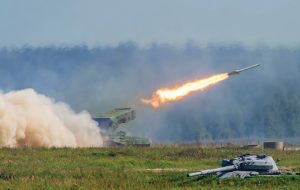
5 Midcourse Discrimination Approach: The best approach for addressing the midcourse discrimination problem is the synergy between X-band radar observations and optical sensors onboard the interceptors with a proper shoot-look-shoot firing doctrine.
The midcourse discrimination issue aside, MDA and the Services appear to be on the right track for developing BMD systems for countering short-, medium-, and intermediate-range ballistic missile threats.
However, while Aegis, Terminal High-Altitude Area Defense (THAAD), and Patriot (PAC-3) are well developed and suited to their individual missions against these types of threats, there has been limited interface among them until recently. Yet, MDA is closing this gap at present.
III.Most Prominent Systems
A.US Anti-missile Defense Systems:
1 THAAD: Terminal High Altitude Area Defense (THAAD) is a transportable system that intercepts ballistic missiles inside or outside the atmosphere during their final, or terminal, phase of flight.
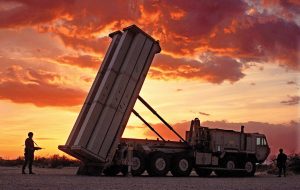
THAAD uses a one-stage hit-to-kill interceptor to destroy incoming ballistic missile targets.
THAAD is able to intercept incoming missiles both inside and just outside of the Earth’s atmosphere at a range of 200 KMs, which mitigates the effects of weapons of mass destruction before they reach the ground.
The ability to intercept both inside and outside the atmosphere makes THAAD an important part of layered missile defense concepts, as it falls between the exclusively exoatmospheric Aegis interceptors and the exclusively endoatmospheric Patriot interceptors.
There are four main components to THAAD: the launcher, interceptors, radar, and fire control. The launcher is mounted on a truck for mobility and storability. There are eight interceptors per launcher.
Current Army configurations of THAAD batteries include 6 launchers and 48 interceptors, though certain reports indicate that this could be scaled up to 9 launchers and 72 interceptors. The THAAD system utilizes the Army Navy/Transportable Radar Surveillance (AN/TPY-2) radar to detect and track enemy missiles at a range of up to 1,000 kilometers.
The fire control system is the communication and data-management backbone and is equipped with an indigenous THAAD Fire Control and Communications system.
The Command, Control, Battle Management, and Communications (C2BMC) also provides tracking and cueing information for THAAD from other regional sensors on Aegis and Patriot systems.
2 Patriot: The MIM-104 Patriot PAC-3 is the U.S. Army’s primary air and missile defense system. Initially designed as an anti-aircraft system, Patriot gained attention in the 1991 Gulf War when it was used as an impromptu defense against Iraqi Scud missiles.
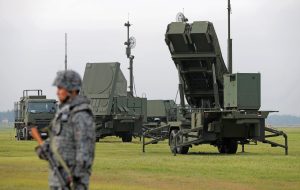
Since then, Patriot and its related interceptors have been optimized for defense against tactical ballistic missiles but remain capable against aerial threats such as aircraft and cruise missiles. Patriot system includes launcher, radars, remote command and control units, and other support equipment.
The AN/MPQ-53 phased-array radar carries out search, target detection, track and identification, missile tracking and guidance, and electronic counter-countermeasure (ECCM) functions. The radar is mounted on a trailer and is automatically controlled by the digital weapons control computer in the engagement control station via a cable link.
The radar system has a range of up to 100km, the capacity to track up to 100 targets and can provide missile guidance data for up to nine missiles.
Target engagement can be carried out in manual, semi-automatic or automatic modes. When the decision has been made to engage the target, the engagement control station selects the launch station, or stations, and pre-launch data is transmitted to the selected missile. After launch, the Patriot missile is acquired by the radar.
The command uplink and the TVM downlink allow the missile’s flight to be monitored and provide missile guidance commands from the weapon control computer. As the missile approaches the target, the TVM guidance system is activated and the missile is steered towards the target. A proximity fuse detonates the high-explosive warhead.
3 Aegis: The well-known Aegis radar, now in use by a growing number of U.S. allied navies, involves an interesting mixture of advanced software, fire control, networking systems and of course radar detection technology.
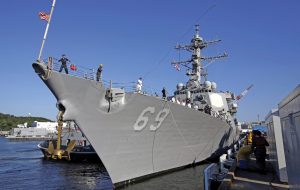
While some U.S. Navy ships are now integrating an advanced Aegis software iteration called Baseline 10, all applications of the software on U.S. and allied vessels are engineered to be compatible with one another to enable information sharing, as a basic point of expanding radar detection across vast allied areas.
The interoperability is grounded upon the technical premise that commonly-configured software can, through upgrades, adjust to new threat specifics yet retain a backward compatibility with other similarly engineered Aegis radar applications.
The Standard Missile-3 (SM-3) is an exoatmospheric missile defense interceptor used for theater ballistic missile defense. Part of the Aegis Weapon System, it uses a hit-to-kill kinetic kill vehicle to intercept ballistic missiles during the midcourse of their flight path. The US Navy currently deploys a subsequent SM-3 variant, the Block IB, and is currently testing the Block IIA for future deployment.
All of the current SM-3 variants fire from Mk 41 Vertical Launching System (VLS) cells on both Aegis-equipped ships and Aegis Ashore sites, according to “Missile Threat”.
4 GMD: The Ground-based Midcourse Defense (GMD) system is currently the only U.S. missile defense system devoted to defending the U.S. homeland from long-range ballistic missile attacks. GMD and its associated elements consist of seven types of sensors on land, sea, and space, and multiple and distributed fire control systems.
When ballistic missile defense sensors detect a missile launch, these data are fused and fed into the GMD fire control system, which is used to launch one or more GBIs. The GBI will fly into the path of an incoming missile before releasing an Exoatmospheric Kill Vehicle (EKV), which uses onboard sensors to hunt down and physically collide with the warhead, destroying it on impact.
B. Russian Systems
1 Antey-4000: The Antey-4000 system comprises 9A83M-2E launcher, 9A84M-1E launcher-loader vehicle, in addition to 9M83ME and 9M82ME surface-to-air missiles—in transport and launch containers.
Based on the S-300V4 anti-aircraft missile system, The Antey-4000 is manufactured by Russian state-owned Almaz-Antey, which is the world’s eighth largest defense contractor.
2 S-300: Even as the Russian Ministry of Defense moves forward with the development of the S-500 anti-missile platform, it has continued to deploy the current generation of systems to units across its borders.
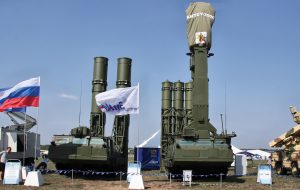
The S-300V4 is the Russian military’s advanced, highly mobile air defense missile system that was developed to protect vital military and administrative facilities and groupings of forces against strikes from ballistic and aerodynamic air attack weapons.
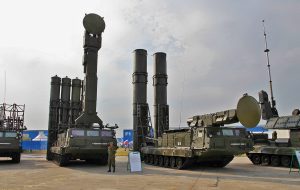
Fourth version of the upgraded S-300V battlefield anti-aircraft missile system, is the first system in the world capable of simultaneously engaging cruise missiles, aircraft and ballistic targets.
It also contains a specialized private sector radar for countering areas affected by interference. It is reportedly capable of targeting AWACS aircraft at very long distances.
3 S-400 Triumf: The S-400 Triumf, NATO reporting name SA-21 Growler, is a mobile, surface-to-air missile system (SAM) designed by Russia. It is capable of engaging aircraft, UAVs, cruise missiles, and has a terminal ballistic missile defense capability. It represents the fourth generation of long-range Russian SAMs, and the successor to the S-200 and S-300.
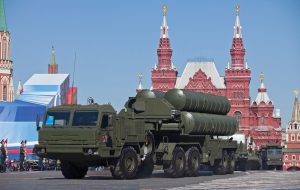
The S-400’s mission set and capabilities are roughly comparable to the U.S. Patriot system. Unlike some Patriot interceptors today, however, the S-400 does not currently employ hit-to-kill ballistic missile defense technology.
The S-400 primarily uses the 48N6 missile series. These missiles allow it to hit aerial targets at ranges up to 250 km and are capable of intercepting ballistic missiles across a 60 km radius, using in both cases a 143 kg high explosive fragmentation warhead.
Another missile series, the 77N6, is being tested. Unlike other Russian SAMs, the 77N6 missiles will use hit-to-kill technology (as do Patriot PAC-3 missiles) and are designed specifically to destroy ballistic missile warheads.
4 S-500: It is reported that S-500 missiles would be capable of defeating fifth-generation aircraft and low orbit satellites in addition to cruise and ballistic missile threats, which could already be dealt with by existing S-300 and S-400 units.
The S-500 will likely use a variety of missiles in addition to the 77N6 missile series, as a hit-to-kill interceptor for ballistic missile targets. The system will apparently have four radar vehicles per battery, including one radar tailored to ballistic missile tracking.
C.Chinese Interceptors Series
1 HongQi 9: Chinese HQ-9 is a medium-to-long range air defense missile system designed and manufactured in China by the Defense Company CPMIEC (China Precision Machinery Import & Export Corporation).
The HQ-9 system is designed to track and destroy aircraft, cruise missiles, air-to-surface missiles, and tactical ballistic missiles. The HongQi 9 development began in the early 1980s, initially based on the U.S. Patriot air defense missile system, that China obtained via an unknown third-party country.
Like the Patriot, the HongQi 9 uses a ‘Track-Via-Missile’ (TVM) terminal guidance system and was originally designed to be launched from a Patriot-style slant-positioned box-shape four-missile container launcher. The launcher erector truck (TEL) has four missile containers.
The HongQi 9 (HQ-9) is a two-stage missile. The first stage has a diameter of 700 mm and the 2nd stage 560 mm, with a total mass of almost 2 tons and a length of 6.8m. The missile is armed with a 180 kg warhead, has a maximum speed of Mach 4.2 and has a maximum range of 200 km up to an altitude of 30 km. The missile has a proximity fuse with an effective range of 35m, which goes active when the missile is 5km away from its target.
The HQ-9’s guidance system is composed of inertial guidance plus midcourse uplink and active radar terminal guidance systems.
The missile containers are mounted on a Chinese Taian TAS-5380 8×8 truck chassis, which is based on the Russian truck the MAZ-543.
2 HQ-29 Anti-Ballistic Missile Interceptor: HQ-29 is believed to be an equivalent to the American PAC-3 MSE / ERINT in terms of technology used (one hundred solid mini-thrusters pulse around the head of the missile, very different from 9M96 C-400 where the Russian thrusters side are to the center of gravity of the missile as Aster).
To suit the kinetic interceptor with lateral impulse thrust and aerodynamic force, a combined fire of motors for attitude control was developed, and then on the basis of this model a firing rule of attitude control motor is designed. Finally, a simulation result proves the feasibility of this firing rule and have had some modifications afterwards.
3 HQ-26: HQ-26 [SM-3 counterpart] is designed primarily for Anti-ballistic Missile capabilities. Very little is known about this system, a Sea-based missile that uses a dual pulse motor, such as the motor SM-3. It is expected that HQ-26 is designated to equip Type 055 destroyer.
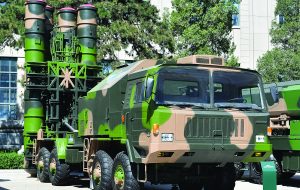
IV.Famous Hi-tech Systems in Service
1 Iron Dome and SkyHunter Missile: Raytheon Missiles & Defense teamed up with Rafael Advanced Defense Systems to defend populated areas and critical assets with the Iron Dome Weapon System.
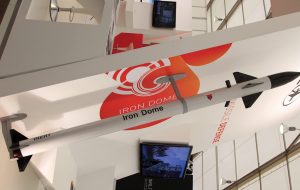
It’s the world’s most-used system, intercepting more than 1,500 incoming targets with a success rate exceeding 90 percent since being fielded in 2011.
Iron Dome detects, assesses and intercepts a variety of shorter-range targets such as rockets, artillery and mortars. It is effective day or night and in all weather conditions including low clouds, rain, dust storms and fog. It features a first-of-its-kind multi-mission launcher designed to fire a variety of interceptor missiles.
Iron Dome’s Tamir missile knocks down incoming threats launched from ranges of 4-70 km. Tamir missiles feature electro-optical sensors and steering fins with proximity fuze blast warheads.
Each Iron Dome battery consists of three to four stationary launchers, 20 Tamir missiles and a battlefield radar. Each of the batteries can defend up to nearly 100 square meters, and are strategically placed around cities to intercept threats headed toward populated areas. The intelligent Iron Dome system ignores incoming threats it determines will land in uninhabited areas, thereby minimizing unnecessary defensive launches and lowering operation costs.
U.S. Version
In 2019, the U.S. Army announced its intent to buy two Iron Dome batteries to fill a need for an interim capability. Given interest by the U.S. and several other nations in Iron Dome’s unique capabilities, Raytheon Missiles & Defense has debuted the SkyHunter system in cooperation with Rafael. Based on Iron Dome, SkyHunter can be produced in the United States to expand availability and capacity for the U.S. and its allies.
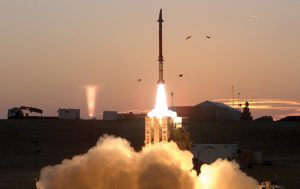
These systems protect at the lowest layer, and Raytheon Missiles & Defense is also teamed with Rafael on the David’s Sling System, which defends at higher layers.
2 Iron Beam: Iron Beam is a directed energy laser air defense system designed to complement the Iron Dome missile defense systems deployed in Israel. The system uses a high-energy fiber optic laser to destroy airborne objects within 4 to 5 seconds of firing. Current power levels of the lasers are in the tens of kilowatts and are expected to increase for greater destructive capability.
The system consists of an air defense radar, a command and control unit, and two High Energy Laser (HEL) systems. It is designed to target short-range rockets, artillery, and mortars.
3 NASAMS: The NASAMS (Norwegian Advanced Surface to Air Missile System) is one of Norway’s most successful defense projects. NASAMS batteries even form the only static surface-to-air missile (SAM) defenses in the United States, guarding Washington DC. However, when the NASAMS project was started, the aspirations were not so grand, Norway managed to design one of the most modular, flexible SAMs developed by a NATO nation.
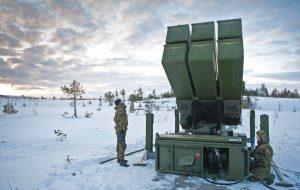
The modularity of the command and control system developed in the NOAH program meant it was possible to integrate the new American AMRAAM (Advanced Medium-Range Air-to-Air Missile) into it. The new system was called NASAMS.
The favorable range and accuracy characteristics of the NASAMS (largely due to the advanced American seeker in the AMRAAM) lead to it becoming an export powerhouse.
NASAMS has been upgraded to NASAMS 2 in Norwegian service and for export. This update is largely a systems upgrade that allows for better fire-control and Link-16 integration, allowing the NASAMS to share fire-control data with other NATO systems.
V. Variety
1 Robot system 70: The RBS 70 is a short-range anti-aircraft missile system. The basic system consists of a missile launch container, tripod firing stand, and an optical sight. As a man-portable system, the RBS 70 is operable by one individual and portable by three. The system relies on a laser beam riding guidance technology.
It can be operated independently in stand-alone mode or configured as a nine system anti-aircraft battery linked with the Giraffe land mobile surveillance radar. The RBS 70 is designed to operate day and night. The RBS 70 operates with the Mk missile family as interceptors.
2 Skyshield: The Skyshield is an all-weather Short-Range Air Defense (SHORAD) system that was developed by Oerlikon Contraves. It can be placed on a pallet or truck-mounted and has autonomous search and tracking capabilities. It uses an Oerlikon 35/1000 Revolver Gun, which fires Rheinmetall’s Advanced Hit Efficiency and Destruction (AHEAD) ammunition.
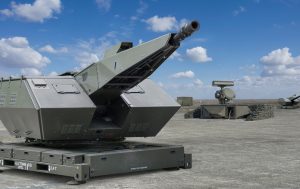
A key advantage of the Skyshield system rests on the use of AHEAD ammunition, which can intercept more targets while using less ammunition. Also, as it is coupled with a radar system capable of detecting targets up to 20km away, Skyshield can immediately target any threat that comes close to the country’s borders.
3 Sea Wolf: The Sea Wolf is a short-range surface-to-air missile deployed on the United Kingdom’s Type 22 and Type 23 frigates as a defense against enemy aircraft and anti-ship missiles. Its final design used a six-round trainable launcher.
The Sea Wolf was designed with the inherent capability to intercept supersonic targets and can target and track enemy missiles automatically via the ship. The automated Sea Wolf helps the ship react faster and more accurately than a human operated system.
4 Crotale Next Generation: The Crotale (rattlesnake) Next Generation (NG) is an all-weather, short-range air defense system, equipped with surface-to-air missiles. The system uses updated VT-1 missiles, which have a range of 11 km. Some Crotale systems use the Mk3 missiles, which have an extended range of 16 km.
It features S-Band pulse doppler surveillance radar with built in Electronic Counter Countermeasures (ECCM).
These automated systems work quickly, averaging six seconds between initial threat detection and missile launch. The NG also boasts an Identification Friend or Foe (IFF) system to differentiate between hostile threats and allies.
The Crotale is a highly-mobile system that utilizes a variety of launch platforms including Multiple-Launch Rocket Systems (MLRSs), 6-wheeled Armored Fighting Vehicles (AFVs), and 4-wheeled armored cars, making it a versatile defense system in any situation.
5 Pegasus South Korea: The K-SAM Chunma or ‘Pegasus’ is a self-propelled surface-to-air missile system and is the South Korean version of the Crotale. It was developed to provide defense against low and medium altitude air attacks.
It can engage all threats flying within 5 kms using a Command-to-Line-of-Sight (CLOS) guidance system. The Pegasus air defense system combines the proven Crotale NG S-Band surveillance radar and Ku-band tracking radar, infrared cameras, and Identification Friend or Foe (IFF) technology to provide a system capable of detecting, tracking, and intercepting up to 20 airborne targets.
VI.Future Missile Defense
A.Next Generation Initiative
According to Kris Osborn, US Military expert, there are many very serious threats the Missile Defense Agency (MDA) and the defense industry are working quickly to counter.
These dangers include mobile ICBMs and nuclear weapons traveling at hypersonic speeds. Also of concern are multiple precision-guided re-entry vehicles and multiple missiles attack at once, each with several separating warheads.
The MDA hopes to counter these problems through a series of innovations, including new weapons such as power-scaling lasers. Perhaps of greatest consequence, the MDA also has a Next-Generation Interceptor (NGI) initiative aimed at deploying a new missile defense weapon by the end of the decade.
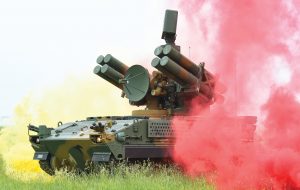
The MDA is planning to award two developmental contracts for the NGI, a weapon intended to integrate the best current innovations with the technical infrastructure necessary to accommodate new technologies as they emerge.
The new interceptor, to fully emerge by 2028 or so, will need to be “fast” and likely armed with multiple “kill vehicles” such that it can take out several ICBMs at one time in space, should that be necessary.
B. Global Matter
In an analysis report on the importance and types of international cooperation for Missile Defense, which is published by the US Center for Strategic and International Studies CSIS, Kevin Fashola wrote: “The research, development, testing, and fielding of missile defense systems has never been an exclusively U.S. undertaking, but the value of international cooperation has become more important than ever.
Cooperation between the United States and its allies and partners serves to leverage partner contributions, increase opportunities for international collaboration, distribute financial burdens, deepen interoperability among systems and operators, and better defend U.S. deployed forces.
International missile defense efforts also reflect the United States’ broader valuation of security cooperation, a pillar of U.S. foreign policy”.
Fashola quoted US Missile Defense Agency director Jon Hill as saying: “Missile defense is a global matter and will continue to be a global matter.
Sources and references:
https://www.armscontrol.org/factsheets/missiledefenseataglance#defend
https://www.britannica.com/technology/antiballistic-missile
https://missilethreat.csis.org/system/thaad/
https://www.army-technology.com/projects/patriot/
https://nationalinterest.org/blog/buzz/coming-soon-russia-new-version-s-300-sale-167536
https://www.raytheonmissilesanddefense.com/capabilities/products/irondome
https://missiledefenseadvocacy.org/defense-systems/iron-beam/
https://www.strategypage.com/htmw/htada/articles/20210115.aspx
https://nationalinterest.org/blog/reboot/nasams-defending-air-washington-budapest-175633
https://www.globalsecurity.org/space/world/china/hq-29.htm
https://www.globalsecurity.org/space/world/china/hq-26.htm
https://missiledefenseadvocacy.org/defense-systems/k-sam-pegasus/
https://missiledefenseadvocacy.org/defense-systems/sea-wolf/
https://missiledefenseadvocacy.org/defense-systems/crotale-next-generation-ng/
https://missilethreat.csis.org/five-types-of-international-cooperation-for-missile-defense/



